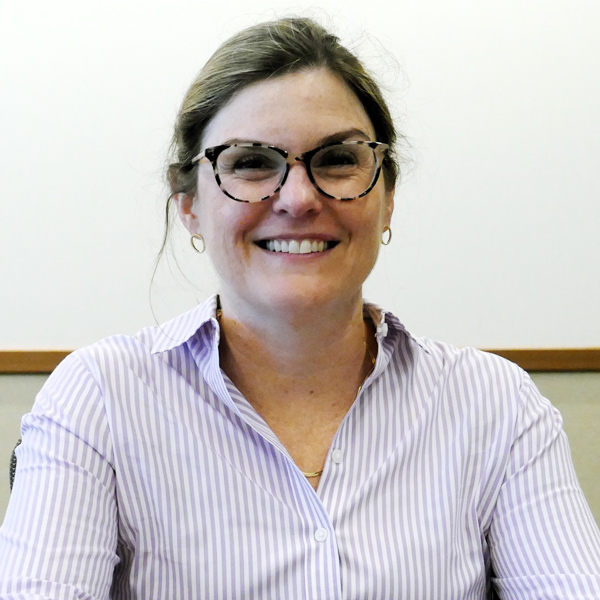AUSTIN, Texas — FERC Commissioner Allison Clements is no rock star, but observing her appearances during a gathering of federal and state regulators last summer, you might be mistaken.
Heads turned as she entered a large conference room with several of her staffers, taking a front-row seat for a National Association of Regulatory Utility Commissioners’ discussion on grid-enhancing technologies (GETs). Attendees whispered and nodded in Clements’ direction. Some regulators approached her. Others gave her space.
Asked if the attention makes her feel like she’s in the same orbit with Mick Jagger or Bruce Springsteen, Clements breaks into a smile and turns toward one of her staffers.
“Well, I like to go see rock stars,” she answered, noting she did catch Western swing band Asleep at the Wheel’s performance the night before.
Her day job does take precedence, however. From the moment she joined FERC in 2020, Clements has focused her energy on GETs, such as sensors, power flow control devices and analytical tools that maximize the existing transmission grid. She has taken a key role in helping FERC establish the appropriate incentive mechanisms for the technologies’ adoption.
Clements earnestly watched the discussion during the NARUC summit. Offered a chance to comment, she stressed the importance of financial incentives to help utilities roll out GETs and said it’s important to dispel the “myth” that GETs are rife with risks when deployed.
“The existence of those risks shouldn’t stop us from starting to require consideration of deployment, and certainly the many cases we’ve heard so far about entities that have used dynamic line ratings to the benefit of customers have found ways to manage those,” she said. (See FERC-state Transmission Task Force Examines Barriers to GETs.)
And then there are the economic benefits.
“As I spoke with providers of grid-enhancing technologies and learned anecdotally the amount of savings that people were getting … as well as the amount of capacity they were freeing up on the system, it was a no-brainer to me,” Clements said. “The light bulb went on and I said, ‘You can’t stand up as an economic regulator on behalf of customers if you don’t try and squeeze the savings out of the existing system that has already been paid for.’
“The cost of these investments are so modest relative to alternatives that they’re an excellent complement to the development of the transmission system,” she added. “They can’t replace the need to modernize our system with new transmission, but certainly they’re an important complement to that investment.”
During FERC’s July monthly meeting, Clements referred to a Grid Strategies report estimating that congestion cost the country about $20.8 billion in 2022, up $14 billion since 2020. She also mentioned a Brattle Group white paper that says using GETs to unlock additional capacity on the grid would save customers $8.3 billion.
She says GETs are a topic “that was once relegated to small windowless conference rooms full of energy grid geeks,” but are now “front of mind” in big rooms before the nation’s regulators.
“GETs will be a win for customers, and states are taking notice,” she said in July. Recalling NARUC’s discussion of the technologies, Clements added, “My team and I had fun brainstorming technology that came after some of the early GETs, like the floppy disk and the Walkman. Today, utilities around the world have proven experience and results.
“I came away with the sense that the regulators, as a group, are open to more systematic deployment of these GETs solutions and I look forward to working with them.”
Noting that part of an engineer’s job description is to be conservative when it comes to reliability, Clements said it’s incumbent on regulators to align financial incentives to encourage the risks of using GETs.
“[Regulators] don’t have to attach a synchrophasor to every line, but to start getting comfortable and educating and understanding their benefits and limitations,” she said.
Clements cited as an example PPL Electric Utilities and PJM using a dynamic line rating (DLR) solution to resolve congestion on two transmission lines. She said they spent $500,000 on one line and avoided a $12 million reconductoring. PPL and PJM spent several million dollars on the two lines, which have saved more than $23 million annually, exceeding projections. (See Grid-enhancing Technologies Poised for Growth with Federal Funds.)
FERC has responded with several initiatives to help facilitate GETs’ deployment. In July, the commission approved Order 1023, which reforms interconnection procedures and included language requiring transmission providers to consider advanced power flow control, transmission switching, and static synchronous compensators and VAR (Volt-Amps reactive) in their studies.
“It’s a great start for grid-enhancing technologies, or as the rule calls them, alternative transmission technologies,” Clements said during FERC’s July meeting. “The rule’s requirement sets only a low bar: ‘evaluation’ of these technologies. I encourage utilities and grid operators to embrace the opportunity this rule provides, learn more about how to grow your consideration and deployment of these grid-enhancing technologies, and share your learning with your neighbors.”
The commission has opened a DLR inquiry (AD22-5) to examine whether their use would help ensure just and reasonable wholesale rates by improving the accuracy and transparency of line ratings. It also has a proposed rulemaking (RM21-17) that mandates DLRs and advanced power flow control devices be more “fully” considered in regional transmission planning processes.
“I would love to see all those things get done,” Clements said. “Grid-enhancing technologies happily provide that modest investment cost. The return on investment is a fraction of the time of a traditional infrastructure expenditure. And they’re dynamic, they’re modular, you can move them, you can use them where they work. There’s just a lot of options to make the grid smarter. The numbers are striking. The dollar savings are striking.”
